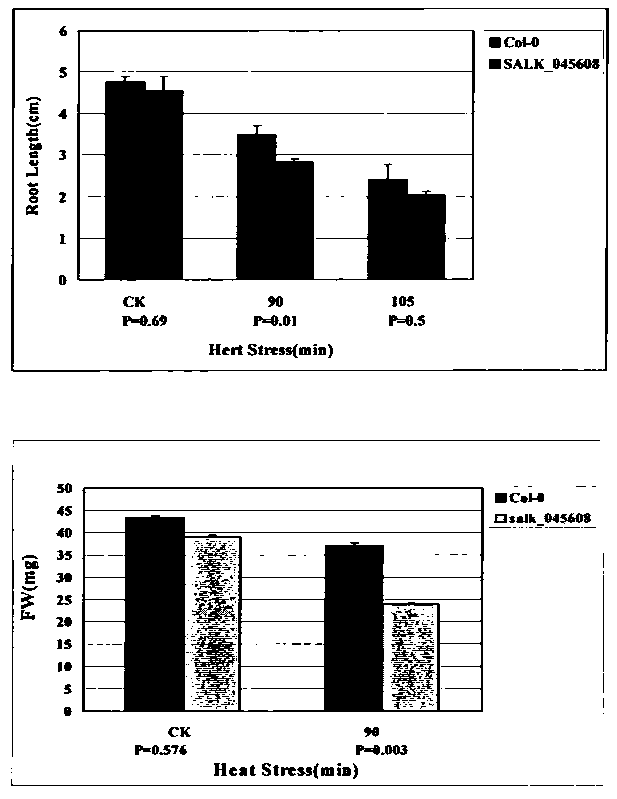Heat shock transcription factor gene AtHSFA6a, coding protein, and applications thereof
A heat-shock transcription factor and gene technology, applied in the fields of application, genetic engineering, plant genetic improvement, etc.
- Summary
- Abstract
- Description
- Claims
- Application Information
AI Technical Summary
Problems solved by technology
Method used
Image
Examples
Embodiment Construction
[0018] The present invention will be further described below in conjunction with experimental methods and data.
[0019] 1. Arabidopsis seedling culture:
[0020] Wild-type and mutant seeds were sterilized by soaking in 0.5% sodium hypochlorite solution for 10 min, and the sterilized seeds were placed in a 4°C refrigerator for vernalization for 2 days, and then spread on MS (Murashige and Skoog) solid medium containing 1% agar. Germinate and grow in a light incubator at 22°C.
[0021] 2. Homozygous mutant identification:
[0022] DNA extraction: All experimental drugs used were purchased from Zhongke Ruitai Bioengineering Co., Ltd. Take about 0.5g fresh leaves of Arabidopsis thaliana, grind them into a paste, add 400μl SDS extract (0.5% SDS (W / V); 200mM Tris-HCl, pH=8.0; 250mM NaCl; 25mM EDTA); centrifuge at 12,000r / min 3min; take the supernatant, add an equal volume of isopropanol to gently shake, let stand for 30min; centrifuge at 13,000r / min for 5min; discard the superna...
PUM
 Login to View More
Login to View More Abstract
Description
Claims
Application Information
 Login to View More
Login to View More - R&D
- Intellectual Property
- Life Sciences
- Materials
- Tech Scout
- Unparalleled Data Quality
- Higher Quality Content
- 60% Fewer Hallucinations
Browse by: Latest US Patents, China's latest patents, Technical Efficacy Thesaurus, Application Domain, Technology Topic, Popular Technical Reports.
© 2025 PatSnap. All rights reserved.Legal|Privacy policy|Modern Slavery Act Transparency Statement|Sitemap|About US| Contact US: help@patsnap.com



